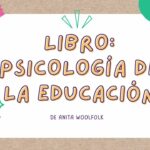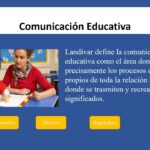
1. Introducing creativity in the classroom
🎨 Introducing creativity in the classroom 🎨
In today’s rapidly evolving world, creativity has become an essential skill for the future. As educators, it is our responsibility to cultivate this skill in our students. By introducing creativity in the classroom, we can empower students to think outside the box, solve problems creatively, and express themselves in new and innovative ways.
When we foster creativity in the classroom, we provide students with a platform for self-expression. This allows them to tap into their imaginations, explore different perspectives, and develop unique solutions to real-world challenges. By encouraging divergent thinking, we enable students to critically analyze problems and come up with ideas that are both novel and relevant.
One effective way to introduce creativity in the classroom is through project-based learning. By assigning open-ended projects that require students to apply their knowledge in creative ways, we encourage them to take ownership of their learning. This approach not only enhances their problem-solving skills but also fosters collaboration, communication, and critical thinking.
Furthermore, incorporating creativity in our teaching methods can make learning more engaging and enjoyable for students. By incorporating art, music, storytelling, and other creative mediums into our lessons, we create a dynamic and vibrant learning environment. This not only captivates students’ attention but also activates different parts of their brain, enhancing their overall learning experience.
In conclusion, introducing creativity in the classroom is crucial for preparing students for the future. By cultivating this skill, we empower students to think innovatively, explore diverse perspectives, and come up with novel solutions. By employing project-based learning and incorporating creative mediums in our teaching, we create an environment that nurtures creativity and fosters a love for learning.
2. The benefits of hands-on projects
😊 Hands-on projects have numerous benefits, making them an essential part of learning and development. One of the primary advantages is that they allow individuals to actively engage with the subject matter. Instead of passively receiving information from a teacher or textbook, hands-on projects encourage individuals to take control of their own learning process. This active participation fosters a deeper understanding and retention of the material.
🧠 Another benefit of hands-on projects is that they promote critical thinking and problem-solving skills. By working on real-world projects, individuals are faced with challenges and obstacles that require creative thinking and problem-solving abilities. This helps to develop their analytical skills and prepares them to tackle complex problems in their personal and professional lives.
💡 In addition, hands-on projects enhance collaboration and teamwork. Many projects require individuals to work together, fostering effective communication and cooperation. This not only improves their interpersonal skills but also exposes them to different perspectives and ideas, enriching the learning experience.
📚 Hands-on projects also promote practical application of knowledge. Instead of simply memorizing facts and theories, individuals are able to put their knowledge into practice. This bridges the gap between theoretical learning and real-world application, providing a more holistic and comprehensive understanding of the subject matter.
✨ Moreover, hands-on projects boost motivation and engagement. The interactive nature of these projects captures individuals’ attention and makes learning more enjoyable. When individuals are passionate and engaged in what they are learning, they are more likely to retain information and apply it in meaningful ways.
🌟 Finally, hands-on projects encourage creativity and innovation. By allowing individuals to experiment and explore different approaches, these projects foster a sense of curiosity and a willingness to take risks. This nurtures creativity and innovation, which are crucial skills in today’s ever-evolving world.
Overall, hands-on projects offer a wide range of benefits, including active learning, critical thinking, collaboration, practical application, motivation, and creativity. Incorporating hands-on projects into educational and professional settings can greatly enhance the learning experience and ultimately lead to better outcomes. So why not roll up your sleeves and start embarking on some hands-on projects today? The possibilities are endless!
3. Promoting critical thinking through creative activities
🧠✨
In today’s fast-paced and information-driven world, the ability to think critically is more important than ever. Critical thinking allows us to process information, analyze situations, and make informed decisions. But how can we cultivate and promote this crucial skill? The answer lies in creative activities.
Creativity has long been linked to critical thinking. When we engage in activities that require us to think outside the box, explore different perspectives, and solve complex problems, we are actively exercising our critical thinking muscles. Whether it’s through art, music, writing, or any other form of creative expression, these activities encourage us to question, evaluate, and reflect on our thoughts and ideas.
By incorporating creative activities into our daily lives, we can effectively promote critical thinking. One simple way to do this is by encouraging brainstorming sessions. Whether it’s in a classroom setting or a team meeting, brainstorming allows us to generate ideas, explore different possibilities, and challenge our own assumptions. This process of divergent thinking is essential for fostering critical thinking skills.
Another effective strategy is to engage in problem-solving activities. Whether it’s solving puzzles, riddles, or engaging in complex board games, these activities require us to think analytically, consider multiple solutions, and evaluate their effectiveness. By practicing problem-solving regularly, we can train our brains to think critically and approach challenges with a logical mindset.
Engaging in debates and discussions is yet another powerful way to promote critical thinking. By encouraging different perspectives, questioning arguments, and evaluating evidence, we can develop our ability to think critically and make well-informed decisions. Whether it’s participating in a formal debate or engaging in a thoughtful conversation with friends, these activities strengthen our critical thinking skills.
Furthermore, incorporating creativity into our learning environments can have a profound impact on critical thinking. By encouraging students to think creatively, explore their own ideas, and challenge existing knowledge, educators can foster a culture of critical thinking in the classroom. This can be done through assignments that require students to think outside the box, create original solutions, and reflect on their thought processes.
Lastly, creative writing can be a powerful tool for promoting critical thinking. Through storytelling, we can encourage readers to question assumptions, analyze characters’ motivations, and consider the underlying themes and messages. By engaging in this imaginative process, readers are actively practicing critical thinking skills without even realizing it.
In conclusion, promoting critical thinking through creative activities is essential in today’s world. By incorporating brainstorming, problem-solving, debates, creative learning environments, and creative writing into our daily lives, we can cultivate this important skill set. So let’s embrace the power of creativity and unleash our critical thinking potential. 🌟
- 👀✋👂¡Descubre cómo aprovechar al máximo el aprendizaje visual, kinestésico y auditivo!
- 👀🔊💪 Descubre cómo aprender según tu estilo: visual, auditivo y kinestésico
- 🧠💡 ¡Descubre cómo Vigotsky revoluciona el aprendizaje escolar! 🏫😮
- 🌍💡Ubicua Educación: La clave para una formación sin límites
- 🧩 Tratamiento para la dislexia: Descubre las mejores técnicas y recursos para superarla
4. Embracing interdisciplinary approaches
🤝 Interdisciplinary approaches are becoming increasingly important in today’s complex and interconnected world. As problems and challenges become more multifaceted, it is essential for professionals from different fields to work together and find innovative solutions.
One of the major benefits of interdisciplinary approaches is the diversity of perspectives it brings. When experts from various disciplines collaborate, they each bring their unique knowledge and skills to the table, resulting in a well-rounded and comprehensive approach to problem-solving. This can lead to breakthroughs and insights that may not have been possible through a single disciplinary lens.
Additionally, embracing interdisciplinary approaches fosters creativity and innovation. By breaking down the barriers between different fields, individuals are encouraged to think outside the box and explore new ideas and possibilities. This cross-pollination of ideas can spark creativity and lead to fresh perspectives that can revolutionize traditional practices and approaches.
Interdisciplinary approaches also promote holistic thinking and a more comprehensive understanding of complex issues. By considering multiple viewpoints and integrating knowledge from various disciplines, professionals can gain a deeper understanding of the complexities inherent in today’s challenges. This holistic perspective allows for better decision-making and ensures that all aspects of a problem are taken into account.
Finally, interdisciplinary approaches are essential for addressing global challenges. Problems such as climate change, poverty, and public health require collaborative efforts from experts in different fields to develop sustainable and effective solutions. By embracing interdisciplinary approaches, we can tap into a wealth of expertise and knowledge and tackle these challenges head-on.
5. Cultivating a supportive environment for creativity
🌱❤️
In my previous blog posts, we’ve explored various ways to foster creativity in our lives. From embracing curiosity to stepping outside of our comfort zones, we’ve covered a range of strategies. However, we must not forget the importance of creating a nurturing environment that supports and encourages creativity to flourish. This is where cultivating a supportive environment becomes crucial.
One of the key elements in fostering creativity is providing a safe and judgment-free space for individuals to freely express their ideas and thoughts. When people feel supported and accepted, they are more likely to take risks and explore unconventional solutions. By promoting collaboration over competition and creating an atmosphere of trust, we can unleash the full potential of creativity.
Another essential aspect of a supportive environment for creativity is providing the necessary resources and tools. Whether it’s access to learning materials, technology, or even the physical space, having the right resources at hand is vital for nurturing creativity. By investing in these resources, we send a clear message that creativity is valued and that individuals can fully explore and experiment with their ideas.
Furthermore, fostering a supportive environment for creativity involves celebrating and recognizing achievements. When individuals are acknowledged for their creative contributions, it boosts their confidence and motivation to continue exploring and taking risks. This can be done through public acknowledgments, rewards, or even just a simple word of appreciation. By fostering a culture that recognizes and celebrates creativity, we create a positive cycle that encourages further innovation.
In conclusion, cultivating a supportive environment for creativity is critical in unlocking the full potential of individuals’ creative abilities. By providing a safe, resourceful, and celebratory atmosphere, we can foster innovation and encourage individuals to freely express their unique ideas. Let’s create a space where creativity can thrive and positively impact our lives and society as a whole. 🌱❤️
6. Incorporating technology to enhance creative learning
😊 Welcome back to my blog! Today, we are diving into a topic that is revolutionizing education and fostering creativity in the classroom. 🎨💻 That’s right, we are exploring the incredible benefits of incorporating technology into the learning process to enhance creative thinking and problem-solving skills.
In the fast-paced digital world we live in, it is essential that education keeps up with the changing times. By integrating technology into the classroom, teachers can provide students with new and exciting ways to develop their creativity. 🌟 From interactive whiteboards to educational apps and online platforms, the possibilities are endless.
One of the main advantages of using technology in creative learning is the ability to engage students on a deeper level. 💡 Rather than relying solely on traditional methods, incorporating technology allows for hands-on experiences and interactive activities. These tools can spark curiosity and enable students to explore and experiment with their ideas in a dynamic and immersive way.
Moreover, technology provides students with access to a vast amount of resources and information. 📚 From virtual field trips to multimedia presentations, students can explore the world at their fingertips. This not only broadens their knowledge but also encourages critical thinking and problem-solving skills, as they are exposed to a variety of perspectives and information.
In conclusion, the integration of technology in creative learning is an innovative approach that empowers students to unleash their full creative potential. 🚀 By utilizing digital tools and resources, teachers can create a stimulating and dynamic learning environment where students are encouraged to experiment, collaborate, and think outside the box. Let’s embrace this exciting technological era and revolutionize education for the betterment of our future generations! 💪
7. Empowering students to take ownership of their learning
En este artículo, exploraremos la importancia de empoderar a los estudiantes y fomentar en ellos la toma de responsabilidad de su propio aprendizaje. Cuando los estudiantes asumen un papel activo en su proceso de enseñanza-aprendizaje, se convierten en agentes de su desarrollo académico y personal.
🔥 Es fundamental reconocer que cada estudiante tiene una forma única de aprender y enfrentarse a los desafíos educativos. Al empoderarlos, les brindamos la oportunidad de tomar decisiones informadas sobre cómo desean abordar su aprendizaje. Esto les permite desarrollar habilidades de autorreflexión y una mentalidad de crecimiento, lo que a su vez les permite alcanzar su máximo potencial.
💡 Al ofrecer a los estudiantes opciones y oportunidades para tomar decisiones, les damos el poder de construir su propio camino de aprendizaje. Esto implica proporcionarles la libertad de elegir proyectos y actividades que les interesen, permitiéndoles explorar su curiosidad y pasión por el conocimiento. Al hacerlo, no solo promovemos su motivación intrínseca, sino que también les brindamos un sentido de propiedad y responsabilidad sobre su aprendizaje.
✅ Alentamos a los estudiantes a establecer metas y a monitorear su propio progreso. Esto implica ayudarles a desarrollar habilidades de autogestión y autorregulación, para que puedan evaluar constantemente su crecimiento y ajustar su enfoque en consecuencia. Al tomar el control de su aprendizaje, los estudiantes se vuelven más conscientes de sus fortalezas y áreas de mejora, lo que les permite tomar medidas efectivas para alcanzar sus objetivos.
🌟 En resumen, al empoderar a los estudiantes para que tomen la iniciativa en su propio aprendizaje, les damos la oportunidad de crecer y prosperar. Esto implica proporcionarles opciones y oportunidades para tomar decisiones informadas, fomentar su autonomía y responsabilidad, y apoyar el desarrollo de habilidades de autogestión y autorregulación. Al hacerlo, los estudiantes se convierten en protagonistas de su propio éxito y se preparan para una vida de aprendizaje constante. ¡Juntos, construyamos un futuro educativo en el que cada estudiante pueda florecer y brillar!
 🎓 Descubre cómo obtener éxito en el MEC aprendizaje: ¡Guía completa para dominar esta metodología!
🎓 Descubre cómo obtener éxito en el MEC aprendizaje: ¡Guía completa para dominar esta metodología! 🎓💡 Descubre los mejores métodos de aprendizaje en la educación mec edu
🎓💡 Descubre los mejores métodos de aprendizaje en la educación mec edu 🔍 Descubre el legado de 🎩 Pere Pujolas: su vida, obras y contribuciones
🔍 Descubre el legado de 🎩 Pere Pujolas: su vida, obras y contribuciones 📚💡 Psicología de la educación para profesores: Descubre las enseñanzas de Anita E. Woolfolk
📚💡 Psicología de la educación para profesores: Descubre las enseñanzas de Anita E. Woolfolk 🧠✨Descubre los secretos del super aprendizaje: ¡Desarrolla tu potencial al máximo!
🧠✨Descubre los secretos del super aprendizaje: ¡Desarrolla tu potencial al máximo! 🚀💡 Descubre los secretos del #SuperAprendizaje: 10 técnicas efectivas para mejorar tu capacidad de aprendizaje 🧠💪
🚀💡 Descubre los secretos del #SuperAprendizaje: 10 técnicas efectivas para mejorar tu capacidad de aprendizaje 🧠💪 📚💻 Aprende a ser un destacado Desarrollador con nuestros consejos de aprendizaje desarrollador
📚💻 Aprende a ser un destacado Desarrollador con nuestros consejos de aprendizaje desarrollador 📚💡¡Aprende sobre el Aprendizaje Operativo y cómo aplicarlo en tu día a día!
📚💡¡Aprende sobre el Aprendizaje Operativo y cómo aplicarlo en tu día a día! 📚💡 Descarga gratis el PDF con los aprendizajes clave que debes conocer
📚💡 Descarga gratis el PDF con los aprendizajes clave que debes conocer